How to Install Recirculating Range Hood – PLFW 520
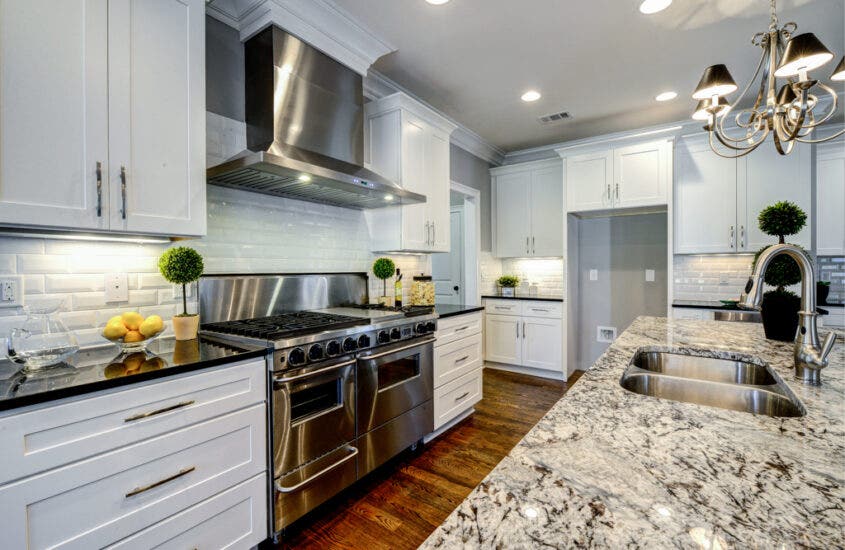
Table of Contents
What You’ll Need
- Pencil
- Level
- Tape Measure
- Drill or Screwdriver
Check out the video below or read the article to learn how to install your recirculating range hood!

1. Decide where you want to mount the range hood
In the video, we first measured the length of the entire wall and then cut that in half, assuming that we want to center our range hood between our cabinets. Mark this center point on your wall and on the ceiling.
You’ll also want to make sure you know how high you want your ductless hood to be mounted. Generally, we recommend that you mount your range hood between 28” and 36” from the cooktop if you’re installing the hood indoors.
Use this tape measure from Amazon to help you make precise measurements.
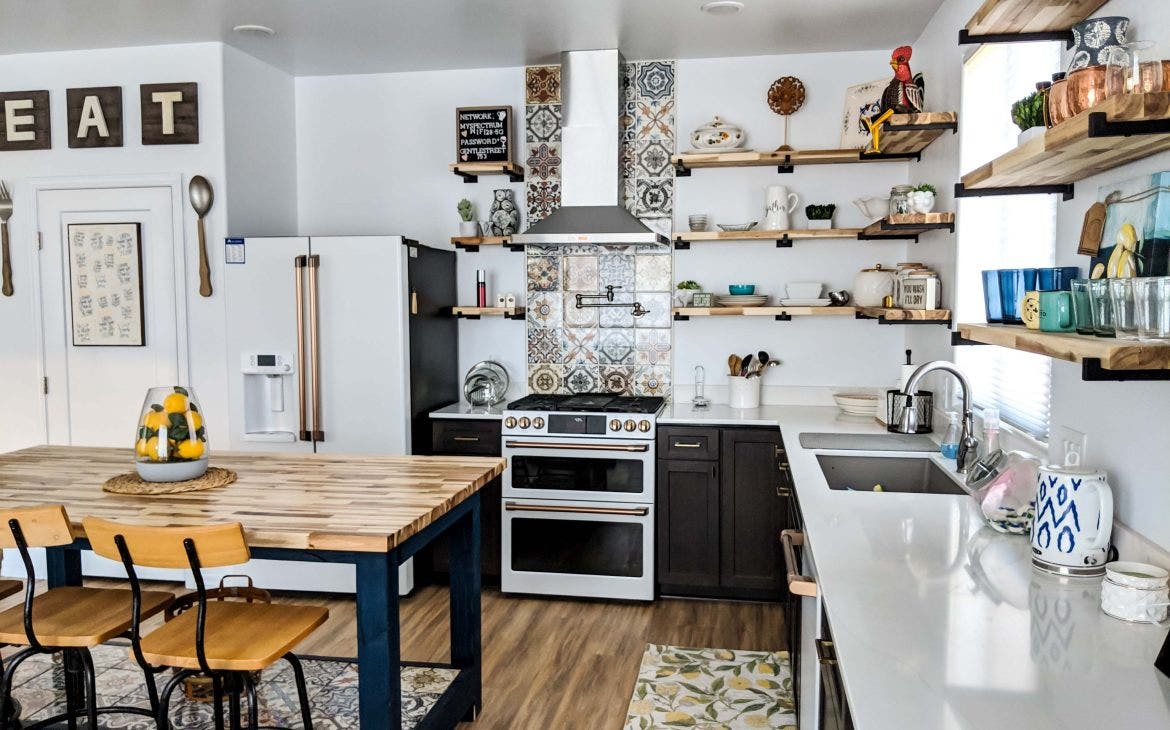
2. Unpack the hood
Now that you’ve done your measurements, take the hood out of the box. Inspect it for damage and plug it in to make sure it’s working before you proceed with the installation. For more advice on range hood inspection, click here.
3. Make your measurements
First, measure 28”-36” above your cooktop. In the video, we mount the hood 36” above the cooktop. You’ll also want to measure the height of your hood. Once that’s done, make a mark on the wall indicating where the top of your hood will be.
Now, you need to find a stud to anchor your range hood in place. For tips on finding a stud without a stud finder, click here. Once you’ve found your stud, don’t worry if it doesn’t match up with the screw holes in the range hood. We’ll drill support screws into the back of the hood in step 5.
The next measurement you need to mark is the screw holes or mounting points on your range hood. To do this, measure the distance between the mounting points and make a note of the center (half of the measured distance).
Now that you have this measurement, grab a large piece of cardboard and line it up with the back of your hood. Outline the hood on your cardboard and mark the two mounting points as well as the center.
Then, cut out the outline of your hood. Once that’s done, line up the cardboard with the mark on the wall that indicates the top of your hood.
Finally, drill through the cardboard into the wall where your mounting points are marked. Drill into the top of the screw slot because that’s where your screw will lie in the range hood.
4. Apply fasteners and screws to hang the hood.
Drill two fasteners and then screws into the holes that you’ve made. This will allow you to hang the hood to the wall.
Check out the reviews on this Black and Decker drill from Amazon to help you through this installation.
5. Find your studs again to drill in support screws.
Once your hood is mounted, lift it to find where your studs are located (you’ve already marked these in step 3. You can then use two grabber screws to drill into the back of your hood. The last thing to do is to double check that your hood is level. Now you’re onto installing the chimney.
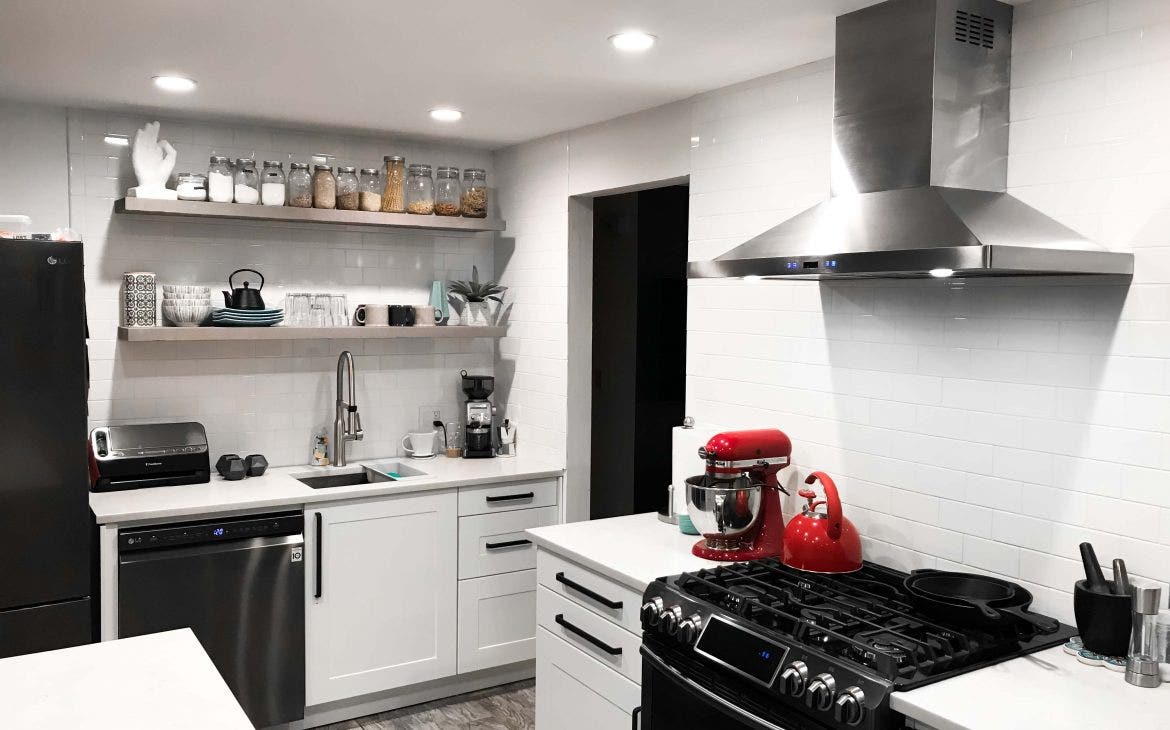
6. Determine where you want to connect power to your hood.
In the video, there’s an outlet right inside the ceiling, so we drilled a small hole to feed the cord and plug up through the ceiling to plug in the hood. All hoods come with a 4’ cord, so keep this in mind when performing your installation.
7. Install chimney bracket to mount the top piece of your chimney.
A chimney bracket will come with your range hood. This piece will attach to the back of your chimney piece by drilling through the two holes in the bracket. Like in step three, you’ll want to measure the width of the bracket and make a note of the center point.
Make a mark on the bracket indicating the center point so you can line the bracket up with the center point on your ceiling that you marked in step one. Finally, mark the screw holes on your wall with a pencil.
The next step is to drill the two sheetrock fittings into those holes and then drill the sheetrock anchors into those fittings.
These anchors will attach your chimney bracket to the wall. Now, screw the bracket into the wall.
8. Install the chimney.
Take the protective plastic off of the chimney pieces and tape some pieces of paper where you’ll be sliding the pieces in and out. This will help prevent scratching the stainless steel as you’re adjusting your chimney during the installation.
We also have a video on how to remove scratches from stainless steel; you can check it out here.
Measure the distance between the top of your hood and your ceiling to get the length of your chimney. Now adjust your chimney pieces to match this length and tape the inside so that the pieces won’t move around. Now mount the chimney above your hood.
It will be anchored with four screws on the side of the chimney: two on top and two on the bottom. The top screws will fasten into the mounting bracket and the bottom will secure into the side of the range hood.
9. Test the range hood.
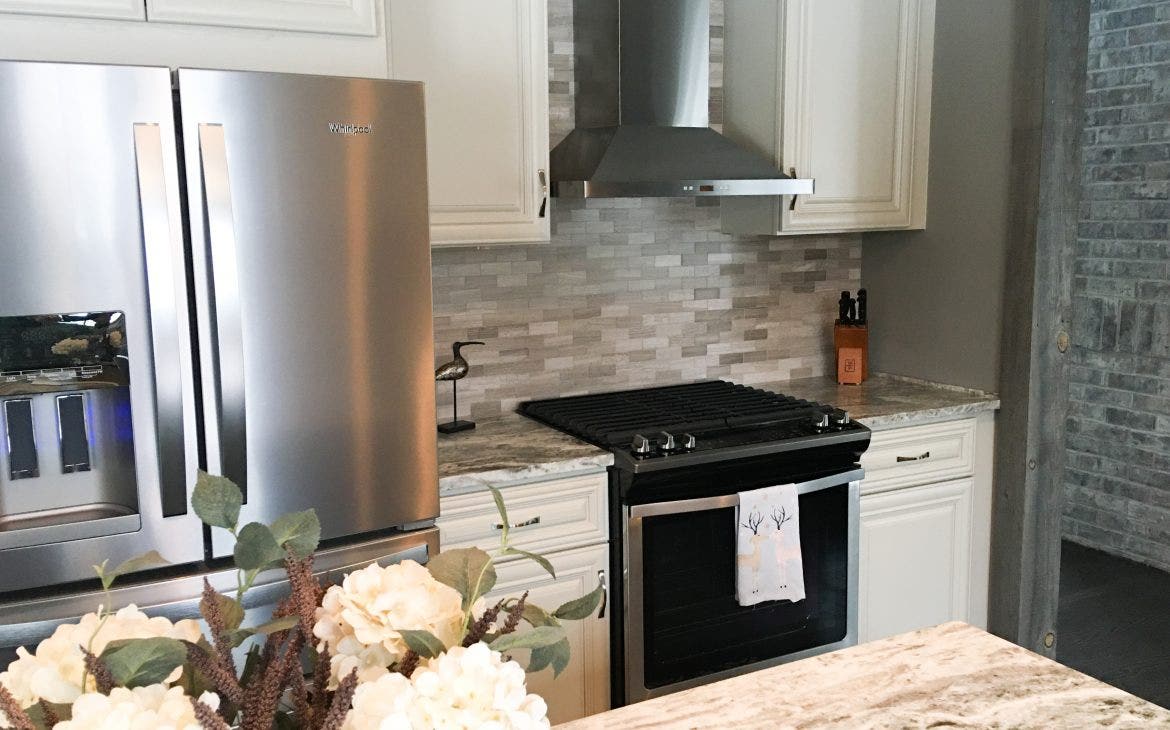
Once your range hood’s chimney is installed, your hood is in place, and your power is hooked up, test the range hood. If your hood is not turning on, double check that it is plugged in properly and there are no loose connections inside the hood.
10. Install the filters.
Now that you’re done with the installation, you won’t need to access the inside of the hood. Take your aluminum mesh filters and set them in place.
We hope that this installation guide for your recirculating PLFW 520 was helpful. Check out the video for more information!
If you have found any of our blog content helpful in any way, please leave us a review on Yelp or Google. It only takes 10 seconds!
As an Amazon Associate, we earn from qualifying purchases.




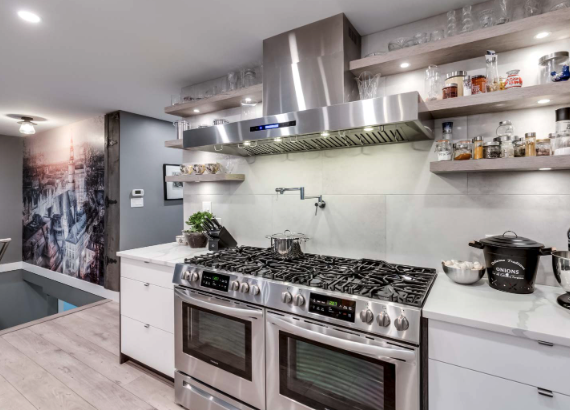
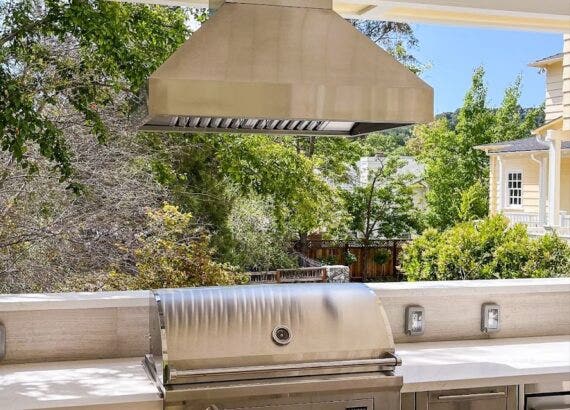
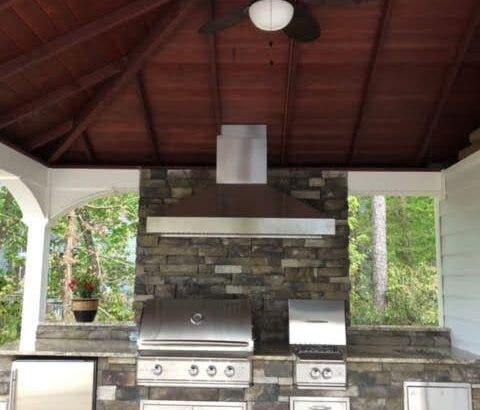
Comments are closed.